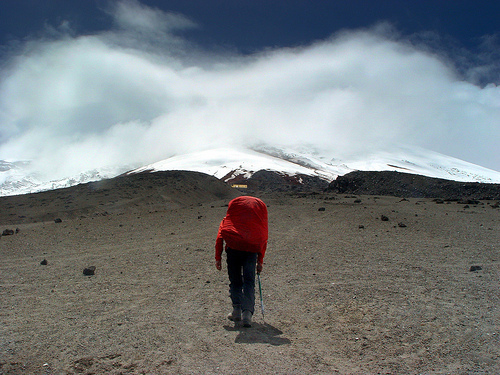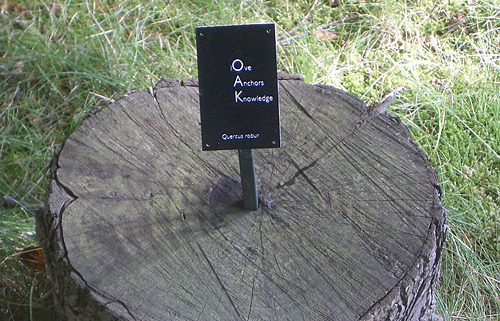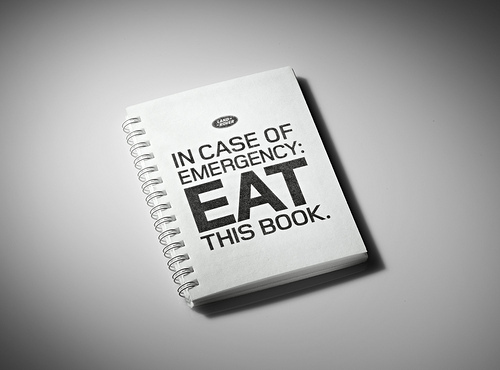Chris Baty's Blog, page 216
April 15, 2013
"Don’t look at this early stage for every sentence to be perfect—that will come. Don’t expect every..."
But every great building began as one.”
- Jasper Fforde, on why becoming a writer requires practice.
April 12, 2013
"Writers spend something like 97% of their time in The Middle. Once you leave those first pages,..."
And once you’ve crossed The Middle once or twice and you’re lounging on the other side, you’ll find you miss it. You’ll realize you long to be out there again, under the sky and the stars. The weather changes a lot in the middle. Some days, the skies are dark and it’s hard to find your way forward. Those days are long and little progress is made. Some days, it’s strangely bright and clear, and suddenly you can see the horizon ahead, and dozens of possible paths present themselves to you. But every day is different, and every day there is a new way to go and a new thing to see…”
- Maureen Johnson, on the joys of being immersed in your story.
April 11, 2013
NaNoWriMo Survival Guide: Planning to Vanquish Writing Panic

This month, we’re taking the SURVIVAL acronym from a wilderness survival guide, and using it to lead you through the depths of the forests, lakes, and crags of your writing journey. Our very own Michael Adamson, a valiant intern here at Camp HQ expounds on V — Vanquish Fear and Panic:
S – Size Up the Situation
U – Use All Your Senses, Undue Haste Makes Waste
R – Remember Where You Are
V – Vanquish Fear and Panic
I – Improvise
V – Value Living
A – Act Like the Natives
L – Live by Your Wits, But for Now, Learn Basic Skills
Picture yourself upon a mountaintop.
The wind is howling. Your mind is tired. Your body is exhausted. You wonder what madness drove you here. Your route back to camp is a winding, precarious trail down the mountainside. The skies begin to darken. You are miles from safety. Out there in the distance, a wildcat does growl….
You get the idea. Fear wakes you up at night, fills you with vertigo when you peer over an abyss, and, yes, prevents you from filling up the page in front of you. For a writer, fear is subtle, but it can build into the dreaded “paralysis of analysis,” and then nothing’s getting done.
Of course, the extraordinary is often accomplished despite fear. Alex Honnold, known for climbing massive rock walls without any kind of protection against a fall, says “I do get scared when soloing…those kind of feelings can compound themselves. I get a little jolt, but then I nip it in the bud, and return to an even keel.”
Think back to the mountaintop. Thunder cracks like a whip, and you spring into desperate action. Hurling yourself recklessly down the mountainside, you make for cover. Unsurprisingly, you lose your footing and tumble. Your ankle is bent in a way no ankle should ever bend. It’s clear you aren’t going anywhere.
Fear, left unchecked and given a catalyst, turns into panic, which turns into epically bad consequences.
Anyone who’s rushed to write a paper in college understands. We wait until the final hours before the deadline, panic, then churn out a paper in a wild frenzy. The paper invariably doesn’t get the grade we want. That disappointment leads to nagging doubt about how good a writer we are, which only augments our fear.
In a fearful state, we procrastinate. We think about what it is we have to do, but we don’t do it, and soon there’s no time to do anything. It’s a vicious cycle, and can get out of control.
Breaking down our writing-related fears is a complex process and can take years of reflection and therapy. We want to write now, so we don’t have time for that. Instead, let’s just accept that fear exists, and focus on preventing it from becoming full scale panic.
We can keep fear in check by sticking to a daily plan. In other words, vanquish panic by nipping fear in the bud.
A climber like Alex Honnold has a plan. He knows how his foot needs to move so that his hand can reach the next hold. He knows where the next resting ledge is, and how to manage his energy to reach it. Let’s use his example in our writing.
You’ve already got the bones of a plan, which is to write a novel/screenplay/whathaveyou in one month. That in and of itself isn’t much of a plan, however. We need to break that down into daily, achievable goals. The more specific the goals, the easier it is to know if you are achieving them, and the better you’ll feel.
For example: I will write x amount of words per day, and by the end of week y I will have plot idea z fleshed out. Fill in the variables as you like.
Remember that your fears, whatever they may be, are illusory. They exist only when you dwell on them. They exist for a reason, but that reason might be difficult to tease out right now. Let’s worry instead about nipping our fear in the bud by sticking to our plan, and we may never have to deal with that awful panicky feeling that sneaks up on us right around the deadline.
— Mike
Photo by Flickr user Peter Gene.
April 10, 2013
"All of us harbor secret hopes that a magnificent novel will tumble out of the sky and appear on our..."
Whether you’re reading or writing, there is nothing magical about how you get from the middle of a book to the end of one. As Robert Frost put it, “The only way out is through.” So go spit in the face of our inevitable obsolescence and finish your @#$&ng novel.”
- John Green, on defying creative despair.
April 9, 2013
NaNoWriMo Survival Guide: Remember Your Writing Journey is Just Beginning

This month, we’re taking the SURVIVAL acronym from a wilderness survival guide, and using it to lead you through the depths of the forests, lakes, and crags of your writing journey. Joanna Penn from The Creative Penn tackles ‘R’ — Remember Where You Are:
S – Size Up the Situation
U – Use All Your Senses, Undue Haste Makes Waste
R – Remember Where You Are
V – Vanquish Fear and Panic
I – Improvise
V – Value Living
A – Act Like the Natives
L – Live by Your Wits, But for Now, Learn Basic Skills
I took part in my first NaNoWriMo when I was an avid reader but didn’t have much of a clue about writing fiction. I ‘failed’ that year, but from that mess came the seed of my first novel, Pentecost. Fast forward a few years and I’ve sold over 55,000 copies of my first three books, and have just finished my fourth novel, which I started during NaNoWriMo last year.
Your writing life will change over time, but if you’re just starting out, here’s where you are right now:
You’re amongst friends.
The writing community at NaNoWriMo and beyond is amazingly supportive, and you will find friends along the way who understand your weirdness and the dark words that come from within, your sense of humor and the quirky characters you create.
Here you will find people who understand how hard writing actually is, and who will support you on your journey even if it’s through a tweet. As you develop over time, you will find peers with whom you can learn the craft, swap and edit work, or even form writing partnerships.
You’re in an environment for learning. Failure is OK.
The advice that helped me start writing fiction was: “It’s OK to suck”. There is a great myth that the best books arrive fully formed in perfect sentences on the page. The truth is that the best books get to their place through a lot of editing, and that first draft material is exactly that: material to be worked into something marvelous.
Your task this month is all about learning as you write, and challenging yourself to venture a little further outside your comfort zone. It’s important to experiment and not worry about any kind of perceived failure. This is a safe space, so use it to break through any blocks you have about what you can write.
You’re at the beginning of the rest of your writing life.
This is the big picture: each book you write, or short story, or screenplay, or any kind of creative product is an intellectual property asset with value that will last for the rest of your life. That’s an exciting future!
You might think you’re a long way from that right now, but remember that you’re just at the beginning so there’s time to achieve some great milestones. To make it that far, you will have to put in tiny, incremental steps—like writing 100 words a day, or 1500 words a day, or whatever you commit to. Like reading in the genre you love or learning more about the craft.
So remember where you are right now, but also think about where you want to be and then take some concrete steps this month to get there!
Joanna Penn is the author of the ARKANE thrillers Pentecost, Prophecy and Exodus. Joanna’s site for writers, The Creative Penn, has been voted one of the Top 10 blogs for writers, and offers articles, audio and video on writing, publishing and book marketing. Connect with Joanna on Twitter.
Photo by Flickr user mollyjolly.
April 5, 2013
NaNoWriMo Survival Guide: Take the Time to Know Your Characters

This month, we’re taking the SURVIVAL acronym from a wilderness survival guide, and using it to lead you through the depths of the forests, lakes, and crags of your writing journey. Liz Fenton and Lisa Steinke from Chick Lit Is Not Dead tackle ‘U’ — Use All Your Senses, Undue Haste Makes Waste:
S – Size Up the Situation
U – Use All Your Senses, Undue Haste Makes Waste
R – Remember Where You Are
V – Vanquish Fear and Panic
I – Improvise
V – Value Living
A – Act Like the Natives
L – Live by Your Wits, But for Now, Learn Basic Skills
They say two heads are better than one. And in our case, we must agree! You see, even though we went to the same high school and college, have names that sound similar and write identical narratives, our writing process could not be more different. And while that difference may have caused some pretty major girlfights early on„ it’s now something we celebrate. (Well, most of the time anyway…)
Liz is a self-proclaimed corner-cutter. She races through her chapters without so much as a second look. Lisa, on the other hand will over-think each plot point to death, editing and editing and editing some more. The truth is that neither of these approaches are good for your writing. So after a few slammed doors and harsh email exchanges, we’ve finally learned to meet in the middle.
The key to great writing? If you ask us, that answer is: Take your time (but not too much time!).
Ask yourself these questions before you get too deep into your novel:
Will my reader understand my characters’ motivations? Think about your characters as you start writing. What are their likes and dislikes? Where did they go to school? What are their fears? The better you know them, the stronger you will make them and the better your book will be. Make sure that you’ve provided enough context so that people will understand why they make the decisions they do.
Do I have any cardboard secondary characters lingering in the wings? Confession: Our first two manuscripts (which didn’t sell) had some seriously flat husbands trailing around our heroines. Double check to make sure that your protagonist’s sister/husband/wife has a personality and isn’t just there to fill a void.
Am I being consistent? Make a list of your characters and their physical attributes so you can refer back to it as you write. That way you can make sure your main character doesn’t have green eyes on page 10 and sapphire ones on page 150!
We wish y’all the best of luck with your writing!
xoxo,
L&L
Liz Fenton and Lisa Steinke have been BFFs for 25 years. They are the co-creators of the popular website Chick Lit is not Dead and co-authors of The Toast, to be published by Atria/Simon & Schuster in May 2014.
Photo by Flickr user mermaid99.
April 4, 2013
Why I'm Writing: There's No One Better Qualified to Write My Story

This year during Camp NaNoWriMo, writers of all sorts are sharing what they love to pen, and why you should join them. Today, Sheridan Jobbins, screenwriter of Easy Virtue , tells us why the only thing you absolutely have to do is write what you know:
Okay, so shining blade of talent Jane Austen said it first, and I’m just jumping onto her crinoline coat tails, but when she advised her cousin to ‘write what you know’ she delivered a diamond of wisdom so pure it’s possible to look straight through it.
For example, you there! You putting your mulish head down and saying: but I want to write science fiction! Or war stories! Or historical novels of sweeping grandeur and startling innovation… Only I’ve never been an intergalactic bounty hunter who had their organs harvested by a time-traveling scientist on an intergalactic fact finding mission.
Take heart: I don’t think Austen was being prescriptive about your story or subject matter. I certainly don’t think she meant for us all to write autobiographies. I think she was giving advice about emotional truth and authenticity.
I see it like this: if you like research, then research. If you like science fiction, then you probably already know the forms and function of the genre. If you are a teenager, then you are able to tell me more about the condition of a 16 year old’s heart than I remember—and you can bring any and all of that to your story if you want to. But what you really bring, is the desire to bring it at all.
And that is the most liberating piece of advice I have to give. You can be naked, lustful, angry, hurt, murderous, forgiving, bull-headedly yourself in fiction.
It’s like this: in all of time there is no one better qualified to be you. There never was, and there never will be. And that wild, raw, uncensored originality is what will differentiate you from every other writer for all time. So there’s no point in trying. There’s no point in trying to be someone else. There’s no point in even thinking. It’s like George Lucas got Yoda to say in Star Wars: “Do or do not. There is no try.”
So there you are now, sitting at your steam punk computer, with your feather-tipped stylus poised to commence. And the most valuable creative gift you have—the one thing you bring to your story that will levitate you out of the crowd for all eternity—is you. Sexy, angry, boring, brilliant, nutty, flighty, lazy, marvelous, you.
So what do you know?

Sheridan Jobbins is a third-generation Australian film maker. She currently mentors and edits other writers through the scriptwriting/development process, and lives in Geneva, Switzerland with her husband, Scott, and dog, Pamela.
Photo by Flickr user dullhunk.
April 3, 2013
Why I'm Writing Creative Nonfiction: Delving Inside People's Heads

This year during Camp NaNoWriMo, writers of all sorts are sharing what they love to pen, and why you should join them. Today, Jeanne Veillette Bowerman, who adapted Slavery By Another Name , tells us how creative nonfiction can take you into people’s minds and hearts:
“Nonfiction” is a word that has always paralyzed me. It implies no flexibility to write outside-of-the-box. Fact is fact. How can a writer mold and shape their story when the historical elements are set in stone?
When I set out to write the narrative adaptation of the Pulitzer Prize-winning book Slavery by Another Name: The Re-Enslavement of Black People in America from The Civil War to World War II, I was worried regurgitating facts would suck the joy out of storytelling. My challenge was to honor the truth of history while focusing on telling an emotionally moving, dramatic story.
In my writing process, everything begins with two outlines: one for plot and one for character development. With the adaptation, I chose the most emotionally moving, real-life events to put into the plot portion of the outline. After all, the whole point of storytelling is to make people feel something. The greatest danger of Creative Nonfiction is simply transcribing a history lesson and boring your audience.
My job was to merge events, even merge multiple characters into one, in order to drive the story at a compelling pace. Ask yourself which facts interested you when you first discovered this nonfiction story. If it interested you, it will probably interest your reader. Cut everything else.
Grabbing your audience’s attention is even more difficult when the nonfiction story is well known. How can you keep them interested when they already know the outcome?
Characters. They are the sweet spot for every story. All I knew of my characters were their actions of over 100 years ago. There were no interviews beyond court testimony. There was no way to know what their wounds were, what their conversations were like, or what their relationships really were with the other players involved.
I did the only thing I knew how – I put them on my therapist’s couch. I scanned all the information, making notes on what the actions of my main characters were, and then analyzed them, as if they were patients.
For example, the plantation owner, John Pace, the first white man to be brought to trial for holding slaves, was not a simply-villainous Southern slaveholder from Alabama. I discovered that Pace had a black female servant with him from his childhood until death. He even took her with him when he left his father’s farm. That relationship gave another complicated layer to his story and gave me a subplot to delve into.
Look at every fact and ask if it’s interesting enough, if it moves the plot forward or stalls it, if it has potential to be a subplot, or if it says something about your characters’ inner lives. Don’t be afraid to work with the narrative to make it more interesting without altering the basic facts of events. Whatever you decide to keep in your version of Creative Nonfiction must move the audience emotionally.
Bottom-line: in order to write Creative Nonfiction, you need to get creative in how you approach the overall story. Rip it apart to find the story’s heart, which lies in the characters. Put them on the couch and see what their actions say about their true selves. Take your readers to a place traditional nonfiction can’t go… inside people’s heads and hearts.
Jeanne Veillette Bowerman is the editor and online community manager of Script Magazine. She is co-founder of the weekly Twitter screenwriters’ chat, #Scriptchat, and wrote the narrative film adaption of the Pulitzer Prize-winning book, Slavery by Another Name, with its author, Douglas A. Blackmon. Follow @jeannevb on Twitter.
April 2, 2013
"You better [start writing] now because you know how to write, and you have fingers, and you have..."
So you have to do it, goddamnit.”
- Dave Eggers, on getting started with your writing.
April 1, 2013
NaNoWriMo Survival Guide Day One: Why You Can Do This

Camp NaNoWriMo is a go! Whether you’re a returning Camper, or brand new to our virtual writing retreat, we’re ready to guide you through this month of writing-madness. We’re taking the SURVIVAL acronym from a wilderness survival guide, and using it to lead you through the depths of the forests, lakes, and crags of your writing journey:
S – Size Up the Situation
U – Use All Your Senses, Undue Haste Makes Waste
R – Remember Where You Are
V – Vanquish Fear and Panic
I – Improvise
V – Value Living
A – Act Like the Natives
L – Live by Your Wits, But for Now, Learn Basic Skills
When my sister was younger, my mom used to say that she was “full of good intentions and bad sense”: I wanted to know if it really was safe for her to jump off the banister from halfway up the stairs?
“Sure,” she’d say. “Actually, if you get a pillow, I should be able to do it from the top.”
Her best friend wanted to have a wasp-smashing contest?
“Sure,” she’d say, “But anything but bare-handed is for kids.”
I was in desperate need of a bathroom, but was stuck in karate class?
“Here’s the thing,” she’d say, “Just go a little bit to relieve the pressure.”
All of these were bad suggestions. And yet I’d continue to consult with her again and again. There was just so much confidence in her answers. Not only in the certainty of her tone (and boy howdy, did she speak without a quaver), but a confidence in me.
Because, really, the question was always, “Will I survive?” And her answer was always, “Yes.” She’d put a hand to her chin, compare your ability to the difficulty of the situation at hand, and never find you wanting.
She definitely reaped a few negative consequences from her certainty as life went along. You know: she dislocated her shoulder, endured a sting or two, gulped down a laugh when I turned my white-hot glare on her after thoroughly wetting my gi. We all get bumped and bruised, and when confronted with a particularly unfamiliar challenge, we learn to hesitate a little longer, to be a little less certain.
You may be staring up at the steep stretch of month ahead of you, wondering if you’re going to make it to the top with a manuscript in hand. Maybe you’re sizing up the situation and feeling yourself hesitate, remembering the ache of old bruises.
There are really only two important questions at the beginning of this journey to help you size up your situation; to assess your fears and remember your goal in full flush:
What are you afraid of?
Why do you want to write your story anyway?
You can do more than survive this month. Because, here’s the thing: we know just how hard and nerve-wracking it can be to tell your tale. We also know just what you can do, Wrimos, and how far your abilities go… It’s the most confounding thing: whenever we weigh your ability against the challenges lined up against you, it’s impossible to find you wanting.
We’ll see you at the peak.
Photo by Flickr user landrovermena.
Chris Baty's Blog
- Chris Baty's profile
- 63 followers






